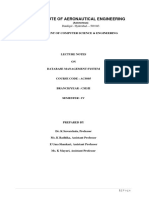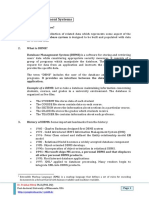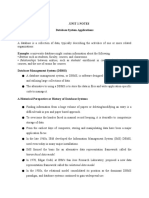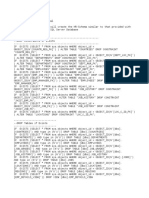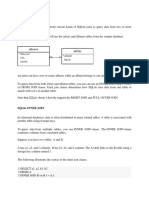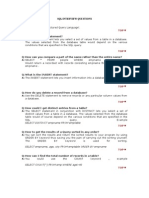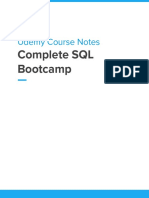0% found this document useful (0 votes)
15 views35 pagesDBMS Unit - 1 - Part-1
The document provides an overview of Database Management Systems (DBMS), covering their definitions, purposes, and advantages over traditional file systems. It discusses the historical development of DBMS, various data models, levels of abstraction, and the structure of a DBMS, including key components like the SQL interface and query evaluation engine. Additionally, it highlights the importance of data independence, integrity, security, and efficient data access in managing large-scale interrelated data.
Uploaded by
bapanapalli lokeshCopyright
© © All Rights Reserved
We take content rights seriously. If you suspect this is your content, claim it here.
Available Formats
Download as PDF, TXT or read online on Scribd
0% found this document useful (0 votes)
15 views35 pagesDBMS Unit - 1 - Part-1
The document provides an overview of Database Management Systems (DBMS), covering their definitions, purposes, and advantages over traditional file systems. It discusses the historical development of DBMS, various data models, levels of abstraction, and the structure of a DBMS, including key components like the SQL interface and query evaluation engine. Additionally, it highlights the importance of data independence, integrity, security, and efficient data access in managing large-scale interrelated data.
Uploaded by
bapanapalli lokeshCopyright
© © All Rights Reserved
We take content rights seriously. If you suspect this is your content, claim it here.
Available Formats
Download as PDF, TXT or read online on Scribd
/ 35


